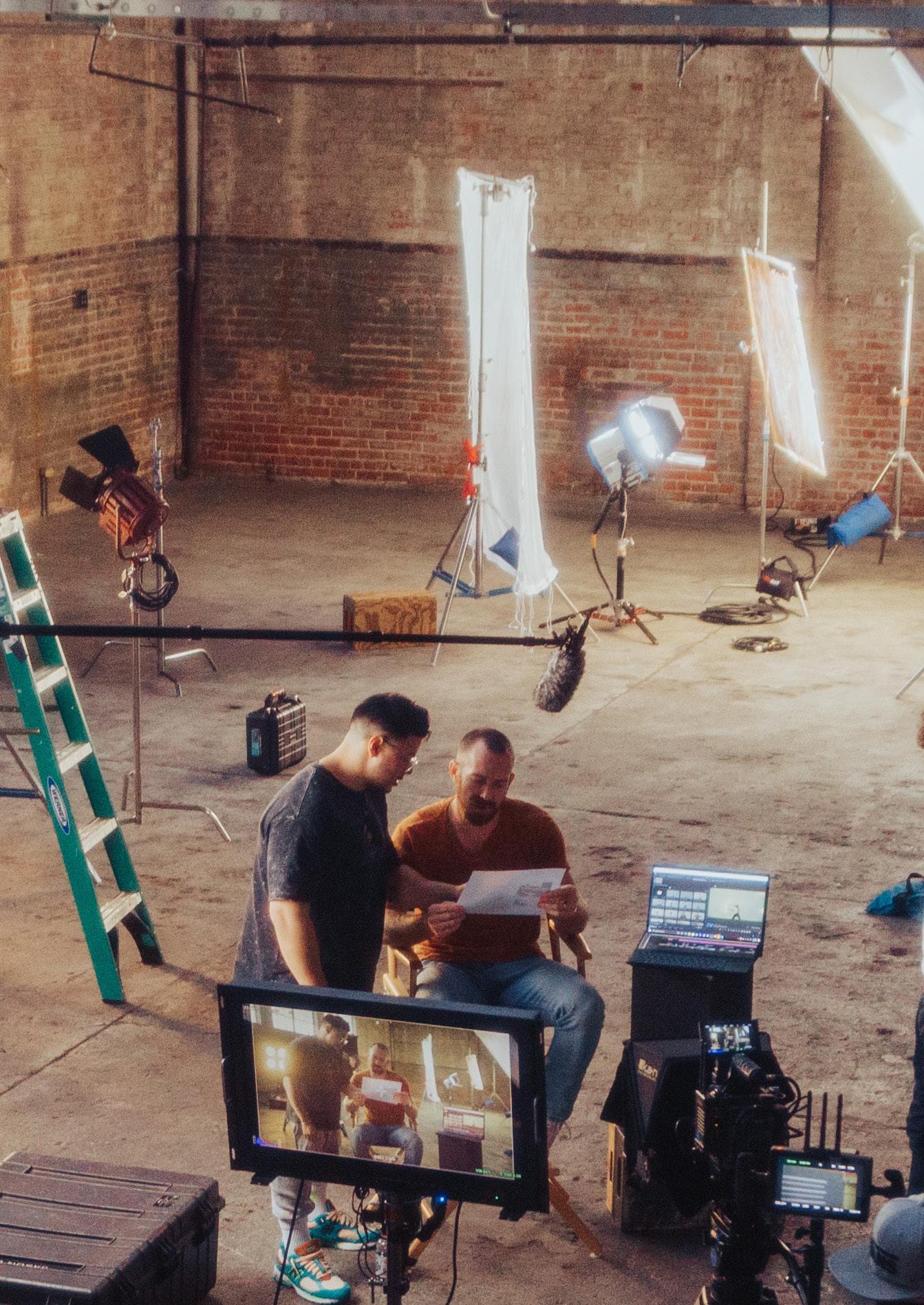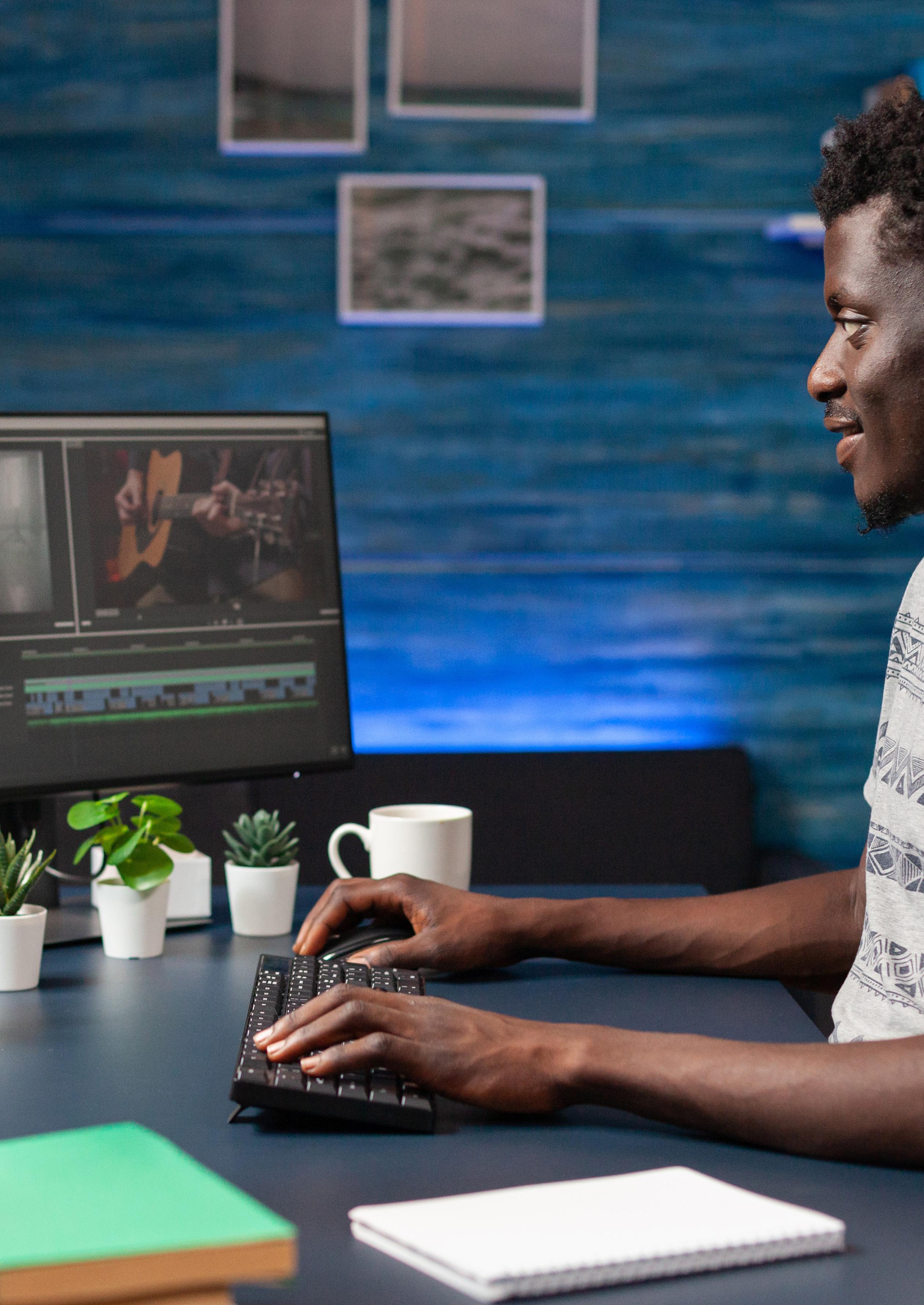
5 minute read
Remote Production with Brett Danton
with Brett Dantonremoteproduction
Innovative technologies have enabled remote production to take centre stage. Although live video capture remote from the studio has been happening for years, COVID-19 has forced this trend to evolve. Today, everything from filming content to directing to editing can be done remotely.
One adopter of remote production is Brett Danton, a successful Director, Cinematographer and Director of Photography (DoP). Having spent his whole career working with and adopting new technology, he now calls himself a technologist too.
Brett works with world-renowned brands all over the globe, most recently in Australia for the furniture brand, Nick Scali. Rather than flying across the world and navigating COVID-19 restrictions, Brett directed the commercial from his home in Essex – “I’m giving myself jetlag at home”, he joked. Whereas traditionally a crew of 10-20 people would fly to set, now only a couple of people are needed on set while the rest work remotely.
For Brett and his crew, remote directing seemed like an unlikely idea pre-pandemic. “I remember the crew joking that I’d find some way of directing from home and the client laughing. And then it actually happened, and we had to do it”, he said. Brett had to convince his clients that remote production was not only possible but could create the same results as if he were in Australia. Brett stresses that the correct equipment and setup were required to achieve this.
“We needed the highest quality image with the absolute minimum delay to make this work. I wanted to set it up so that I actually felt like I was in video village”.
Brett experimented with various systems before finally settling on Colorfront. “The advantage of Colorfront is that you only need the equipment at one end”, says Brett.
“Pre-pandemic, there was a five-second delay which is hopeless for remote production. With the setup we have now, I can view 4K HDR material with a 0.3 second delay. It just goes to show the advances we have made in such a short period of time”, he adds.
Showing off his impressive home set-up, Brett explains that both he and the crew have matching Atomos Neon monitors, so they can view the same image at the same time. They also installed witness microphones around the studio. Brett has a full surround sound system at home so he can hear the entire studio and be a part of the action.
“In some ways, I found it better because I can concentrate more and I’m not getting disturbed by anybody”, he says.

Adopting this new way of working wasn’t as difficult as expected. Brett recounts an incident where he lost power and was still able to direct remotely: “I live in a field in the middle of nowhere and we had a sudden power outage halfway through the shoot. The signal was so good that I jumped across onto my iPad on 4G and carried on directing. It wasn’t ideal but that’s how good the systems have become now”.
However, he believes that taking shortcuts and using Zoom or a computer monitor to direct won’t cut it. For the Nick Scali commercial, it was important that the stitching and the details of the furniture could be seen. That required a good connection at each end and razor clear monitoring.
“Whatever you do, whatever monitor you’re looking at, whatever feed you’ve got - it has to be the same quality as what’s in the studio. The minute it drops below that, then problems start to creep in”, he states.
Trust and communication also play a fundamental role in remote production. Brett relies on his DoP physically on set to walk around the studio and feed information back to him. Some of his friends have used Google Earth to plan their shoot if they haven’t been to the physical location. Fortunately, Brett was already familiar with the Nick Scali set as he had designed it and shot there before. To communicate with the crew, Brett tried everything from walkie talkies to Zoom. Eventually, they transformed Brett into a self-proclaimed robot whereby an iPad with Zoom and a professional mic was wheeled around set on a stand. Even the client joined the shoot remotely on a separate feed so they could watch the crew and the live image back together.
Although Brett enjoys the lack of distraction and hassle of flying, he admits to sometimes missing the atmosphere on set and the freedom to walk around and pull crew members to the side. The brainwave of putting witness microphones in the studio and hearing the chitter chatter on set has helped him feel more involved. But he was quick to return to the positives, “my wrap time was just closing the laptop”, he laughed.
When discussing the future of remote production, Brett not only believes that it will be used more often, but that it will go even further. Having no control over the quality of the client’s viewing device can cause issues, so he hopes that software will be developed to create a standard for colour grading.
“My gut feeling is that you still can’t beat a location recce or looking at the space once. But once you’ve done it, you almost don’t need to go back”, he says.
However, he adds, that this is only possible if you have a good quality image coming through. “I want something client-proof that literally shows them the colour box, where it’s going to clip the image or where it is colour shifting. We use Frame. io for reviews and it would be great if that standard was built into it”, he says.
Mixed reality is also a popular topic of conversation at the moment and Brett is a big advocate of it. He has just finished shooting a concert inside the Metaverse using VR for the band Bastille. The pop concert was shot in an aircraft hangar in Norfolk in front of a 1.5-pixel pitch screen supplied by Midwich. Their VR experience is launching in March 2022.
His next exciting project is shooting a mixed reality shoot with McLaren and we’re super excited to see what Brett has in store for us next.










